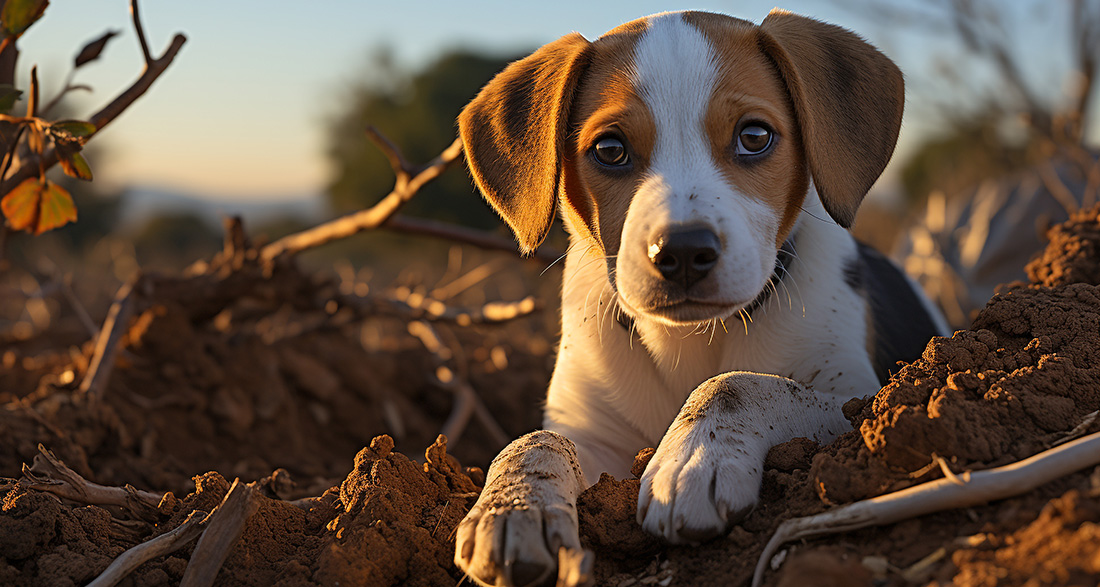A little puppy is moving in with you – what now? The little rascal is full of energy, curious, eager to be occupied, yet still clumsy and disoriented. He’s not house-trained yet, and he might not even know his name. Stay positive and approach the situation systematically. Read on to learn how to train your puppy step by step!
New Addition to the Family – What Now?
Once home with you, the puppy needs to get to know the new environment and unfamiliar stimuli. Therefore, many new dog owners give their little one an adjustment period before starting obedience training. However, the opposite is true: Start training your puppy from day one because young dogs are very receptive at this stage.
Until the 8th week of life, the puppy goes through what is called the imprinting phase. A time when he processes many stimuli. During this time, the foundation is laid for how the puppy perceives the world and how well he responds to his environment later on. It is therefore important to choose a trustworthy breeder who treats the young dogs accordingly.
The imprinting phase transitions into the socialization phase, which lasts until about the 20th week of life. During this phase, the dog is with you and must learn the rules of the house, how to interact with you, the family, strangers, and other dogs. Also, in the socialization phase, early practice is key.
Daily Lessons – There’s a Lot to Learn for a Puppy
What’s on the curriculum at puppy school? As a newcomer to this world, the little one has a lot to learn.
Puppy training includes, among other things,
- teaching the puppy his name.
- house-training.
- teaching important commands.
- teaching him to be alone.
Feel free to take a few weeks with the last point. Initially, your puppy needs to build trust in you.
Start with the other exercises simultaneously. However, don’t overwhelm your puppy with too much instruction at once. Five to ten minutes per training session is completely sufficient for a puppy a few weeks old. Read the “Leaving Puppies Alone” guide for more information.
Teaching the Puppy His Name
The little one learns his name first and should associate it with himself: “Aha, now they’re referring to me! I should look at my human because something important is happening for me!”
The environment for name training should be free of distractions and calm. Also, your puppy shouldn’t be too sleepy or fed. Choose a moment when your puppy is not paying attention to you and not too engaged in another activity. Now, address him clearly with his name. As soon as he looks at you, reward him. This can, but doesn’t have to, be a treat, as puppies also respond positively to cuddles or play. Repeat the exercise several times a day. If you’re training two puppies, practice with each one separately.
House Training the Puppy
House training the puppy is one of the first training measures ever. Often, older puppies are already house-trained when they come to their new owners, but they may not have good bladder control and need to get used to the local conditions of their new home. Start this lesson from day one.
The key here is to remain calm and show patience instead of punishing or yelling, which will lead to the opposite effect.
Young dogs need to relieve themselves approximately every two hours. So, it’s better to take them out for shorter walks but more frequently. Since dogs don’t like to soil their sleeping area or feeding spot, most learn quickly to go outside the house. Then, it’s immediately time to praise, praise, praise! If there’s an accident in the house, simply pick up the puppy and take him outside. Reprimand him at most with a firm “No!”, without any other punishment.
A tip: Take the puppy out shortly before bedtime. If necessary, special dog training pads can help with this.
Teaching the Puppy the Most Important Commands
What are the most important commands?
- “Stop!” to cease an activity,
- “Sit!” to sit down,
- “Stay!” to stay and wait,
- and “Come!” to come when called.
Start with, for example, the important command “Stop!” or “Leave it!”. You can also use “No!” for this purpose, but it’s a word that dogs often hear too frequently in daily life.
For example: Your puppy should stop an activity like chewing on objects and move on to another action. Say the command with a deep voice and make a threatening face. You’ll notice that dogs are much more sensitive to body language than to words. If your puppy stops chewing – perhaps initially out of surprise –, look at him kindly and praise him immediately. If necessary, offer him a puppy-friendly chew toy.
With the other commands, praise your dog when he shows the right behavior in response to the command word. If he happens to walk towards you, immediately say the command “Come!” and praise him for it. If your puppy sits in front of you, also immediately say the command “Sit!” and give him a small, appropriate reward that doesn’t make him overweight.


